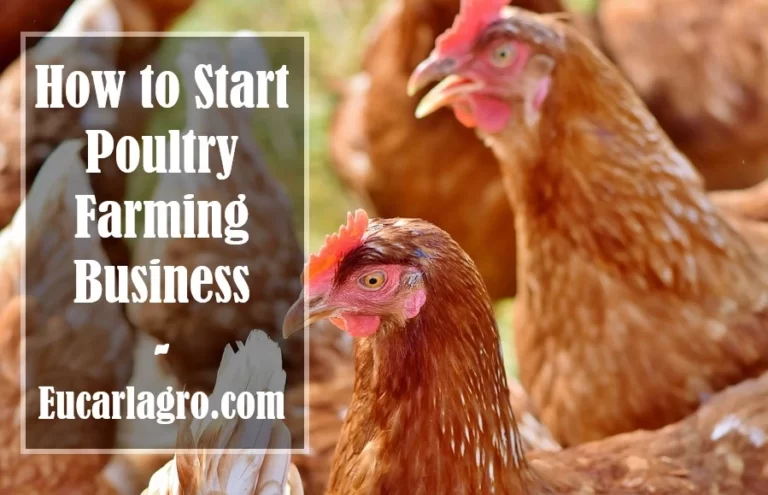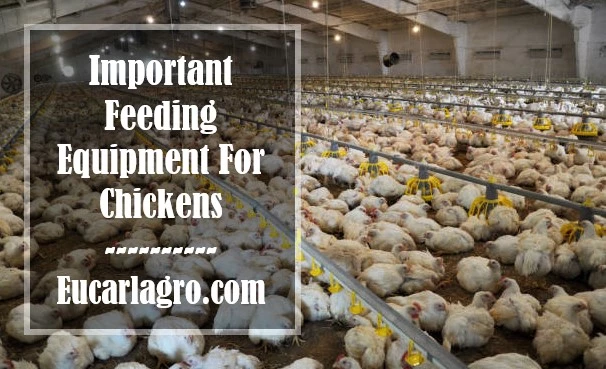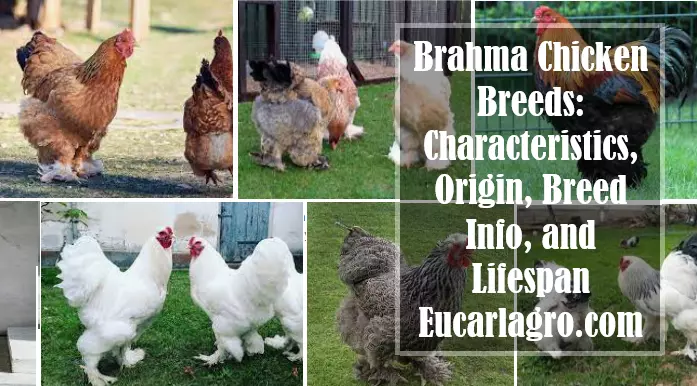Best Tips For Battery Cage System Of Poultry Farming
There are various kinds of housing systems used in poultry farming. Intensive farming systems such as the deep litter system and the battery cage system of poultry farming are very common because of their benefits.
Battery cage systems are a cost-effective way of housing poultry. Though they are not the most healthy or comfortable form of poultry housing available, they do have their good sides. There are two major types of battery cages commonly used in the chicken farming industry. These are: furnished and non-furnished.
If you want to venture into poultry farming with a large number of birds but limited space, then you should consider using the battery cage system of housing.
In this article, we have detailed all you need to know about the battery cage system of poultry farming – the different types of poultry battery cages and the best battery cage for your chickens. But first, let’s understand what is a battery cage
What Is A Battery Cage System In Livestock Farming?
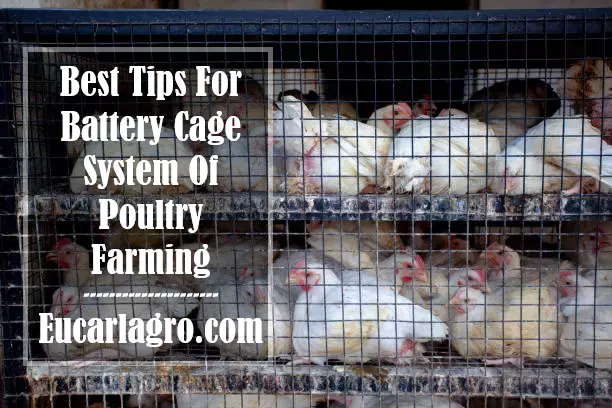
The battery cage system or the chicken cage is a chicken-keeping system where the birds are arranged in a typical cage of rows and columns. This arrangement is closely knit with dividing walls that are similar to that of a battery cell.
The battery cage system of poultry farming is very common among the methods used in raising chickens. The chickens are bred together in a place safe from harsh weather conditions and predators.
The battery cage system in poultry farming gained its popularity largely because of its economical value. Currently, this system is used by farmers both for economical benefits as well as in rearing a high number of healthy chickens in a limited space.
A large number of birds are kept in a confined space or cage in the battery cage system of poultry farming. The cages are stacked one on top of another while the floor space for each bird may be up to twice its height.
Commercial chicken production requires lots of resources. With the battery cage system of poultry farming, you can be able to save up on investment costs in your poultry farming business.
The battery cage system has lots of amazing benefits not just in poultry farming, but also in keeping pets like rabbits
Poultry management with the battery cage system is highly recommended by veterinarians over other systems of keeping chickens. As we go through this article, we would be highlighting the reasons for this.
Criteria for Classifying the Various Types of the Cage System of Layer Chicken Farming
The following criteria are used in grouping the different types of the battery cage of poultry farming:
- Number of birds in the cage or the carrying capacity
- Cage arrangements in the farm or the number of decks in the battery cage
- The type of bird to be kept in the cage.
Types Of Chicken Battery Cage System
The following determines the type of cage you should use
1. Two cage systems are used in grouping the poultry cages based on the carrying capacity of the cage:
1. Multiple Chicken Cages
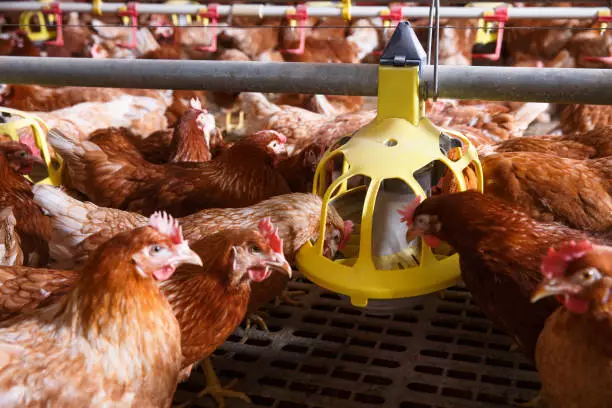
This kind of battery cage is made for rearing a small number of birds. The number as small as between 3 to 4 birds though it may reach up to 10 birds.
2. Colony Cages
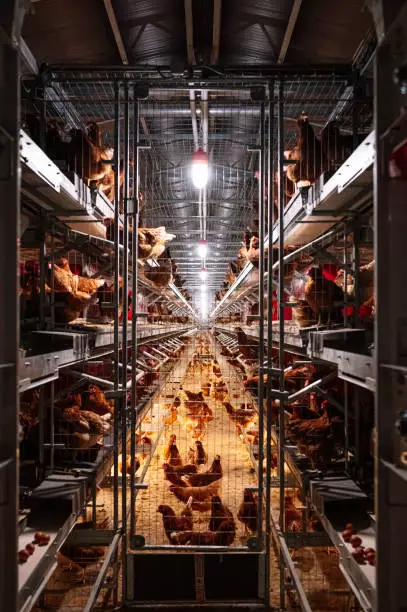
This type of poultry cage, it houses chickens in a colony. Colony cages house more chickens than the multiple birdcages holds. A colony cage is made to hold more than 10 chickens in a single cage.
2. Battery cage system of chicken management based on the number of rows or decks in the battery cage
This category of chicken cages may also be identified by the number of layers or levels the cage has. In this battery cage system, the number of rows is well maximized to keep lots of chicken.
Based on the number of layers kept in each row of the cages, we have the following kinds of poultry cage systems.
1. Single-row Poultry Cage System
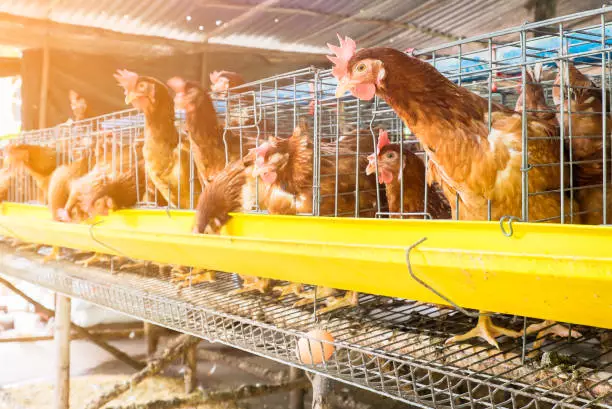
In this type of chicken cage system, just one bird is kept in a cage throughout the farm. The cages may either be in a single row or in a parallel form.
In a flat deck poultry cage system which is similar to the single-layer cage system, there are more cages lined parallel to each other than you would see in the single-layer system. The collection of eggs is normally done with machinery since there is little space for movement.
2. Double-deck Battery Cage
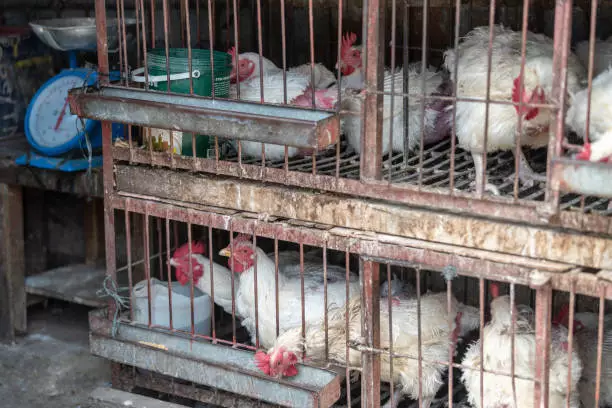
The kind of poultry system where the cages are stacked on each other in such form that there is just a row of chicken cages over another.
3. Triple-tier Cage System
With this cage system in your poultry, you can make good use of the available space in keeping so many chickens without making the place look stuffy or too compact.
4. Four-layers Chicken Cage
This is used mostly in poultry farms that are heavily invested in commercial poultry production. You would find it convenient to manage your birds here only if you have a densely populated farm.
Any other number above the four-tier chicken cage system is not usually advised because you’d not only be stressing your muscles to cater to the chicks but also there wouldn’t be much aeration for the birds in the lowermost tier.
3. Battery Cages Based on the Chicken Type
The different kinds of birds on the farm also determine the type of chicken cage. Here is a detailed grouping for each kind of chicken.
1. Battery Cages For Brooders/chicks
This is the cage system used to house baby chicks on the farm. These chicks are between 0-8 weeks and need to be raised in an environment that permits optimum growth.
It is a poultry farming equipment that you should take seriously both in the cleaning and overall maintenance.
Your birds are most likely to experience a decline in their growth from the sicknesses or infections they might have contracted in their early stages.
Spreading old newspapers and magazines on the floor of their own would help keep their feet warm and ensure there is cross hygiene on the farm.
Most commercial poultry farmers arrange the birds in such form that the feeders and drinkers are kept inside the cage during their first 9 days, then take them outside to peck from in the latter days, so they don’t litter their cages.
2. Grower poultry cages
From the Battery Cages For Brooders/chicks, you advance to the brooder cages. The birds are now between 9 to 18 weeks and this type of development is known as the “Grower stage”
This change in cages does not mean that you should start treating them less or as older birds. They are soon reaching maturation and need quality attention.
Always check to know if they have adequate food, changes in their behaviors, and their new laying patterns.
If you’re ignorant of this, then you should not be bothered when your formerly blossoming birds start producing lesser numbers each week.
It also helps reduce the chances of foot and mouth disease spread in chickens.
3. Poultry Cage For Layers
The best kind of cage system for commercial poultry farming especially egg production is that for the layers.
A well-managed grower cage can easily replace the cages for layers. What’s more, it is here that you can start making money from your egg supply business
Two types of cages may be used for layers. These are the A-type Poultry-cage For Layers that can hold 3-4 tiers and the H-type of Chicken Battery-cage for Layers – A cage type with 3-8 levels.
4. Breeder Battery Cage
Chicken cages made for breeders allow both male and female chickens to associate with each other in order to increase egg production. The eggs collected in the Layer breeder cages may be for hatching purposes or for sale.
Since both cocks and hens can stay together in this cage, much cost is saved on both chicken types.
The breeder cages is also highly effective because a lot of processes are automated to ensure clean hatching eggs.
5. Poultry battery Cages For Broilers
A broiler poultry cage is the easiest to manage among other types. Since the birds cannot produce eggs, the only responsibility is to work on the food, grow bigger, and become quality meat birds.
Broiler cages are hygienic in keeping birds because of the wide space. It also helps to reduce the death of broilers.
Meat production and longevity of the broiler chickens are ensured in this kind of poultry cage.
Advantages of the Battery Cage System of Poultry Farming
The battery cage system as we have already noted is the best type of intensive poultry housing system. Below are some of the reasons for this:
1. Larger Number Of Birds To Be Reared
More birds can be recruited to the farm since space is not a problem here. Modern battery cages hold over 100 chicken in a single unit the cage.
2. Growth of Healthy Chicken
A bird that was raised in a dirty shed would find it easy to adapt to the battery cage system and yet become neat. This is because there is no room to lie in its puddle or push around the feeders and drinkers.
If a wire mesh is used to floor the cage, the droppings would easily pass through the cage thus boosting the health of the chicken.
Battery cages for laying hens have won over the hearts of many because the cages would be attended to strategically than in other alternative husbandry systems.
Another plus point here is that you can easily identify poor producers and underperforming birds
3. Increased Egg Production
In a breeder cage, more eggs are produced by the layers. This number increases when the birds are healthy and properly managed.
4. Reduced Cost Of Management
When going for the battery cage system of poultry farming, a lot of money is saved from the employment of labor, rent payments, and provision of other rearing essentials.
A stylistic design of chicken cages can be constructed at a very affordable rate. As a beginner in the poultry farming business, you will find that poultry battery cages are quite cheap and sustainable.
Costs will also be saved on feeding the chicken because the birds no longer have room to scatter their feeds around their droppings.
Disadvantages of the Chicken Cage System of Poultry Farming
There are just a few disadvantages to the battery cage systems such as:
1. Lack of Space
Whether in a battery cage or a deep litter system, I’d the birds lack space, they may suffocate resulting in metabolic disorders and possibly death.
You can identify a bird that is feeling stuffy if it continually breathes heavily with its tongue sticking out. This can also happen on hot afternoons, but when there is water and food for the chicken, then this should be alarming.
This lack of physiological space can reduce the egg production patterns of the birds. Foot lesions may be observed if a wire mesh is used on the floor.
What to Consider When Choosing a Poultry Battery Cage
The dimensions and measurements of the cages would be the first thing on your mind if you want to choose quality chicken cages for your poultry farm
Flooring the cage with a mesh is considered best for poultry battery cages. Always ensure that the iron mesh you purchase is made with galvanized iron which is not prone to rust.
The feeders and drinkers should be installed outside. The feeder trays can be made of wood, plastic, or aluminum. The drinkers cannot be made with wood instead they can be of an aluminum, plastic, or PVC model.
An average of 5 birds should be kept in a cage if you are still starting out in the business.
Conclusion
Having read through this complete guide to the battery cage system of poultry farming, you must have learned what the chicken cages are, their uses, different types, advantages, and disadvantages, and also tips on how you can make your poultry cage work best for you on your farm

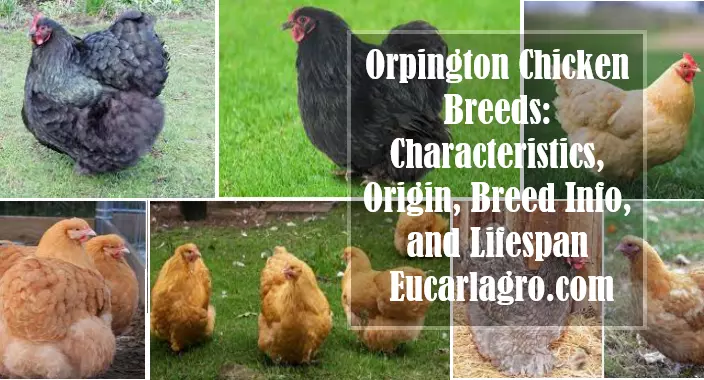
![Top Feeds Price List in Nigeria ([year]) Top Feeds Price List in Nigeria (2024)](https://eucarlagro.com/wp-content/uploads/2023/03/Top-Feeds-Price-List-in-Nigeria.jpg)

